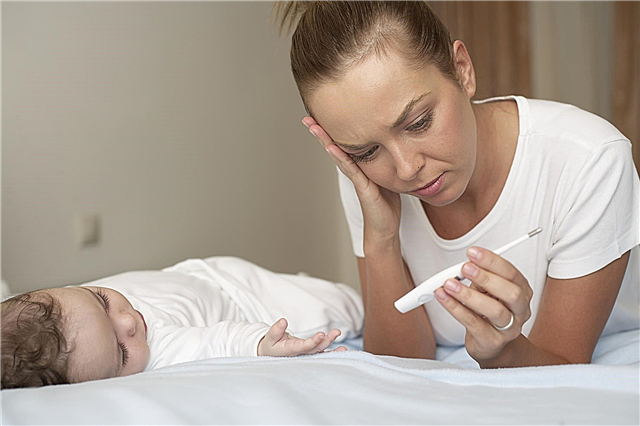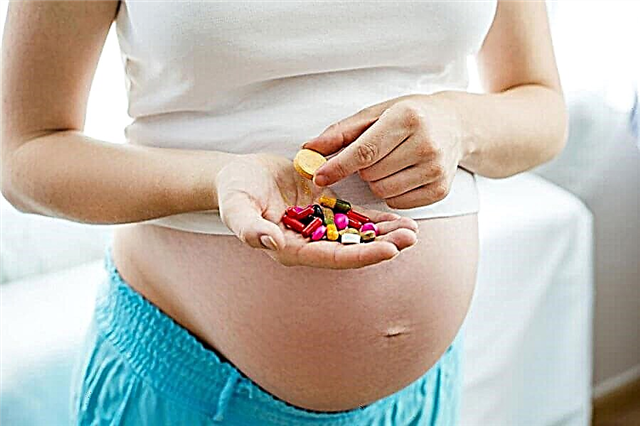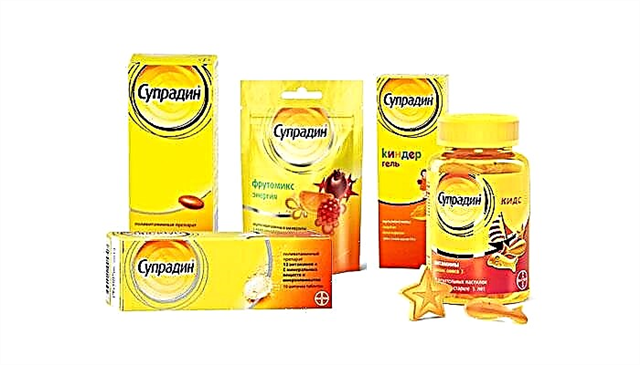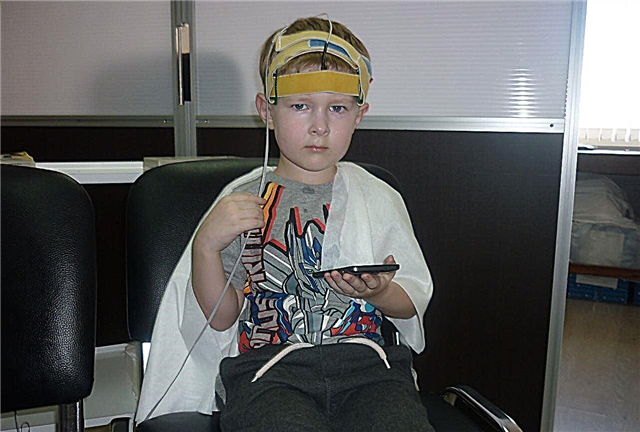Any violation of the child's condition makes the mother anxious. Of particular concern is an increase in body temperature or skin rashes. The manifestation of both symptoms may indicate a rare diagnosis.

Mom and sick baby
Can a rash appear after a high fever?
A rash that appears in a child after a high temperature is not at all uncommon. Children's skin is very sensitive to the influence of external factors, such as:
- changing the temperature regime in the room;
- Food;
- underwear fabrics.
An increase in body temperature mobilizes the entire body. The skin reacts to hyperthermia with increased sweating. Immaturity of the sweat glands leads to blockage of the pores of the epidermis, which is manifested by a rash.
Causes of a rash after a temperature
There are many situations that can provoke skin rashes. Parents need to know about some of them in order to quickly choose behavior tactics: run to the doctor or not worry, because redness does not require special attention to itself. The main thing that parents should be able to do is recognize in a timely manner the nature of the rash and its danger to the baby's life.
There may be several reasons for a rash on the child's body, which arose after the temperature drops or simultaneously with its rise:
- prickly heat;
- allergy;
- bacterial infectious disease;
- viral infection;
- teething.
Attention! If parents are not sure that the rash that appears is a harmless prickly heat, you should contact your pediatrician.
Types of rashes and their distinctive features
Prickly heat is the most common rash provocateur. Babies still do not know how to sweat productively, which is why the clogged pores turn into a small red rash. It does not have purulent white heads and does not mature, unlike bacterial eruptions. In the appearance of prickly heat, it is not so much the high body temperature of the child that is to blame, as the non-breathing clothes, stuffiness in the room and non-compliance with hygiene standards. Miliaria is localized often in the folds, on the neck, groin and on the scalp.
An allergic reaction to antipyretic syrup is also not uncommon. Knocking down the temperature of the child with this form of the drug, parents should be prepared for the fact that rashes may appear mainly on the face or priest. The reason lies in an allergic reaction, but not to the active ingredient, which is often paracetamol or ibuprofen, but to sugar and flavorings. Therefore, if mom noticed similar skin reactions after using antipyretic syrup, this form of medication should be replaced with suppositories.
If the baby has a fever due to teething, then there is a high probability that redness will soon appear in the chin area. Such a rash has no direct connection with hyperthermia, because it acts as a separate symptom of teething - constant drooling irritates the chin that does not have time to dry, which a caring mother also rubs with a napkin every 10 minutes.

Salivation during teething
There are several diagnoses based on the nature of the rash and its association with fever. Among the most popular are:
- Scarlet fever. This is a bacterial infection that does not occur without a simultaneous rise in temperature and a red rash. Additional markers of this diagnosis are a raspberry tongue with inflamed papillae, a white coating on the tonsils, and a sore throat. The rash has its own distinctive characteristics: it spreads from the upper body to the lower body. In other words, first rashes appear on the neck, then on the back and chest, only then on the bends of the arms and legs. In this case, the nasolabial triangle always remains white.
- Chickenpox. A viral infectious disease is characterized by a slight increase in temperature and general weakness against the background of a clear throat and the absence of a runny nose. The rash and the temperature occur simultaneously, while the hyperthermia becomes less pronounced every day, the rash, on the contrary, grows noticeably, covering the entire body. It does not merge into a single spot, but spreads in bulk over the skin. Each red dot has a seal in its center - a papule, which on the second day turns into a bubble filled with a transparent liquid. The rash may itch.
- Roseol. The international name is sudden exanthema. It is an infection caused by a type of herpes virus, like chickenpox. The first and only symptom of this disease is a moderate increase in body temperature, usually not higher than 38˚C. Hyperthermia lasts 4-5 days. On the day when the temperature returns to normal, a pink rash appears on the body. Its fragments have no clear boundaries and heads with pus. The back, shoulders and abdomen are most often pink.
- Measles. As a rule, measles does not threaten most babies, since measles vaccination is included in the mandatory vaccination calendar in Russia. Nevertheless, the parents of those children who missed timely vaccination for some reason should bear in mind the symptoms of measles. It begins like a common ARVI: with fever, runny nose and cough. The mucous membranes of the eyes may even become inflamed. For 4-5 days, the rash covers the head and face, then descends on the shoulders and chest, only then - the trunk and legs.
- Rubella. Most children of conscientious parents will also pass, since free vaccinations are given from her. Those who refuse vaccination will be able to distinguish rubella by a high fever - often above 38.5˚C and a rash covering the chest, back and face. The rashes are clearly expressed, have smooth and clear boundaries.
Attention! If you experience symptoms of scarlet fever or measles, you should immediately contact your pediatrician. Only the timely prescription of an antibiotic will save the child's life and prevent serious complications.

Pediatrician examination
When should a baby rash alert you?
In addition to scarlet fever, which is dangerous for a child, there is another type of rash, which outwardly resembles minor hemorrhages, which all parents should know about. A rash that appears after a temperature in a child should be a reason for parents not to call a doctor at home, but to urgently take the baby to the nearest infectious diseases hospital.
The cause of such rashes-hemorrhages are poisons secreted by the microbe meningococcus. The toxin clogs the vessels, the walls of which burst due to constant pressure. That is why such a rash spreads very quickly, often accompanied by vomiting. If the child is not taken to the infectious diseases department within an hour, hemorrhage into the adrenal glands will occur, a sharp drop in blood pressure, and death will occur.
First aid measures
Any rash that occurs after the temperature rises in the baby or at the same time as it should be a reason to see a doctor. This dangerous pair of symptoms cannot be ignored. Only a specialist can distinguish chickenpox from measles; timely assistance in such cases is the guarantor of a successful treatment.
The only non-infectious prickly heat can be treated at home. First of all, the child needs a cool bath. If there is summer heat outside the window, and there is no air conditioner in the home, the baby needs to be washed several times a day to protect the pores from clogging with dirt and sweat. All children's clothing should be made only from natural and breathable materials. Synthetics not only make the skin sweat, but also irritate the delicate children's epidermis.
A rash that has developed on the chin due to constant drooling during teething requires treatment with baby zinc cream. It is not necessary to constantly rub the baby's face with napkins so as not to provoke mechanical damage. To ensure the health of the skin, it is enough to wash the baby 3-4 times a day, followed by the application of zinc paste or cream with zinc.
Interesting! The cream containing zinc in its composition reliably protects the skin from the effects of any liquid irritants such as urine, stool or saliva.
If adults are confident that a rash has formed immediately after drinking sweet baby syrup, your baby can be helped by ingesting a baby antihistamine. For babies up to a year, there are special forms in drops, which are convenient to add to milk or a drinking cup with compote. After the first such case, you need to inform your doctor that products in the form of sweet syrups are not suitable for treating a baby.
Komarovsky's opinion
If a child has a rash after an illness, a specialist consultation is necessary. Evgeny Komarovsky is sure that children under three months old must be shown to a pediatrician for any condition disorders.
Many dangerous diseases can be avoided by timely vaccination. A disease such as chickenpox should not be feared. The doctor's explanations are that children under 12 years old tolerate it in a fairly mild form.

Vaccination
Most rashes accompanied by hyperthermia are infectious diseases. Therefore, in order to increase the chances of a speedy recovery and reduce the risk of complications, everything must be done so that the correct diagnosis is timely made.



